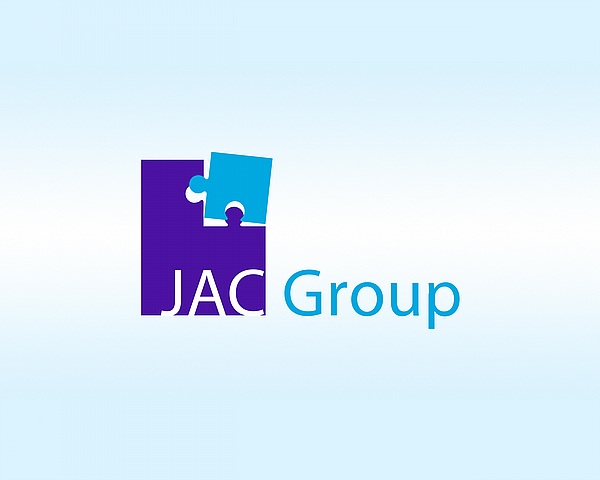The rate of increase in salaries offered to newly hired mid-career professionals is eroding overall due to COVID19. This follows on years of persisting gains since 2013 when JAC Recruitment conducted its first survey of salary trends in the mid-career recruitment market.
- The following is a list of countries where mid-career recruitment market salaries increased at a slower pace in 2020 than in the previous year, with corresponding percentage point rates of decrease:
Indonesia: 8 pp; Malaysia: 4 pp; Thailand: 4 pp; China: 4 pp; Vietnam: 1 pp; India: 1 pp - In fiscal 2019, the rate of salary increase held steady in Singapore and Hong Kong.
- In Japan, the rate of salary increase has remained persistently unchanged for some time, unlike other Asian nations.
JAC Recruitment Co., Ltd. (Takeshi Matsuzono, Managing Director) provides recruitment services across 11 countries worldwide and serves as the largest recruitment consultancy in Southeast Asia. JAC Recruitment has released its survey of salary trends in the mid-career recruitment market for fiscal 2021, encompassing such developments in the nine Asian nations: Singapore, Malaysia, Thailand, Vietnam, Indonesia, China & Hong Kong, South Korea, India, and Japan. Whereas mid-career recruitment market salaries had been increasing at an accelerating rate in many Asian countries up through the year 2019 ever since JAC Recruitment’s initial survey of salary trends in the mid-career recruitment market back in 2013, the survey indicates that the rate of salary increase in the mid-career recruitment market relative to that of the previous year* slowed overall in 2020 for the first time since 2013 due to the COVID-19 pandemic.
* The year-on-year rate of salary increase in the mid-career recruitment market is calculated based on independent data with respect to prevailing salaries paid to new hires in the mid-career employment market. In the Asian nations ex-Japan, salaries paid to new hires in the mid-career recruitment market have typically maintained an upward trajectory year after year.
Note: Refer to the final page of this document for the specific data related to this graph.
In Asia ex-Japan, the financial crisis following on the bankruptcy of Lehman Brothers during the years 2008 to 2009 marked the first time there had been an overall decrease in the rate of salary increase in Asia’s white-collar midcareer recruitment market, after having been consistently increasing for many years previously.
Indonesia, Thailand, Malaysia, and other newly industrializing countries of Southeast Asia have encountered marked decreases in their respective rates of salary increase in the mid-career recruitment market. Factors underpinning this downturn are as follows, on a per-country basis.
Malaysia: Prevailing rates of overall salary increase with respect to those newly employed by Western business process outsourcing (BPO) entities and shared services centres had previously been on a consistently robust trajectory with gains of 10% to 20% per year. However, salaries paid to newly employed professionals by shared services centres decreased in 2020 amid deteriorating financial results not only among BPO enterprises with customers in Europe and the United States, but also at head offices in those markets.
Thailand: There has been a downturn in the rate of salary increase in Thailand’s mid-career recruitment market. This is largely attributable to certain developments, one of which is slumping exports associated with border closures having affected trading companies and manufacturers in the nation’s mainstay automotive industry. Another factor is deteriorating earnings performance in the nation’s retail, consumer goods, and food services sector partially due to its stay-at-home restrictions. Yet another factor is deteriorating earnings performance in the tourism industry which accounts for some 15% of the nation’s GDP.
Indonesia: The COVID-19 pandemic has substantially affected Indonesian employers. For instance, the pandemic has been weighing on the nation’s manufacturing sector given that factories have become subject to closures and other restrictions have been imposed on overall operations, which is in addition to slowing demand both domestically and abroad. The pandemic has also affected the consumer goods sector overall which has been encountering stagnating domestic demand. It has also been weighing on the travel, hotel, and restaurant industries overall amid suspensions imposed on tourism from overseas.
Having been reeling from effects of COVID-19 since the initial outbreak of the pandemic, mainland China has also encountered a sharp decrease with respect to the rate of salary increase in the mid-career recruitment market, which slowed by four percentage points in 2020 relative to the previous year. On the other hand, the rate of salary increase is poised to mount a rapid recovery in 2021 given that authorities took quick action in addressing the pandemic.
Asia’s tourism industry has been hit hard by COVID-19, particularly the travel and hotel sector. Employers in the industry have been forced to significantly reduce their headcounts, which has culminated in a virtual hiring freeze. Japanese companies in the industry have been particularly subject to drastically eroding financial results overall due to the pandemic. That is in stark contrast to the scenario prior to the coronavirus outbreak when such enterprises had been boosting employment as they strove to generate growth in Asia’s tourism-related business by catering to a target market of Japanese nationals.
Financial performance has been improving in areas that include e-commerce and other forms of retail sales, healthcare-related business, as well as supermarkets and other operators in the food products and daily necessities sector amid an increasingly prolonged need for people to stay at home. As a result, companies in such areas of business have been concurrently hiring more employees and offering higher salaries to their new recruits. Meanwhile, companies in the food services industry have been resorting to business models that place greater focus on takeaway orders. Enterprises that facilitate a shift to online operations have been achieving robust growth, particularly platform providers, locally based companies and Chinese-owned firms, thereby culminating in rampant appetite for hiring among such entities.
Various factors in addition to COVID-19 are also attributable to the slowdown in salary growth in the Asian midcareer recruitment market. China, for instance, has been grappling with a stagnating economy due to the US-China trade dispute prevailing since the end of 2018. Meanwhile, salary growth in South Korea has been hampered by an economic slump prevailing since 2019 amid a sharp increase in the nation’s minimum wage, which has been further compounded by a scenario where adverse reaction to the wage hike has been weighing on the prospect of the government increasing worker incomes yet again. In Singapore, professionals are in tight supply relative to demand despite the COVID-19 pandemic, which is underpinned by a situation where the government has been taking action to protect employment of local nationals ever since the nation’s general elections in 2011.
Salary levels in Japan have remained largely unchanged for nearly three decades with the nation’s average annual salary having been JPY 4,466,000 in 1991 and JPY 4,364,000 in 2019, according to the Statistical Survey of Actual Status for Salary in the Private Sector released by Japan’s National Tax Agency. This is in stark contrast to employee earnings trends prior to that, whereby salaries had been increasing by more than 40% annually over the 11 years beginning from 1980 when the nation had a JPY 2,948,000 average salary. Japanese companies face a situation where they must quote salaries at levels equivalent to or above those offered by local companies and foreign multinationals entering local markets. This is particularly the case when Japanese firms seek to hire locally-based skilled professionals overseas, and when they are striving to successfully take on global competitors by shifting to modes of local operations and more autonomous management necessary for them to expand in areas other than manufacturing, particularly when it comes to development and sales.
Not only do prevailing salary levels tend to rise year by year in the Asian market, they also vary substantially depending on occupation and timing of recruitment drives. As such, employers who persistently hire talent at Japan’s consistently unwavering salary levels will find themselves lagging behind both when vying to attract high-calibre professionals and also when it comes to facing off against stringent international competition. When seeking to expand into overseas markets, companies must make business decisions that are adequate based on constant assessment of nation-specific business practices, salary levels and labour markets.
Rates of salary growth in the Asian white-collar mid-career recruitment market (graph data)
|
Singapore |
Malaysia |
Indoneasia |
Thailand |
Viernam |
India |
China |
HK |
Korea |
Japan |
|
|
2013 |
5% |
7% |
10% |
5% |
8% |
10% |
11 |
5% |
5% |
1% |
|
2014 |
4% |
6% |
10% |
4% |
9% |
10% |
10% |
5% |
5% |
1% |
|
2015 |
4% |
6% |
10% |
5% |
8% |
10% |
10% |
4% |
5% |
1% |
|
2016 |
3% |
6% |
11% |
5% |
8% |
10% |
10% |
3% |
5% |
1% |
|
2017 |
4% |
5% |
10% |
4% |
10% |
10% |
10% |
3% |
4% |
2% |
|
2018 |
4% |
5% |
9% |
4% |
10% |
10% |
10% |
3% |
4% |
2% |
|
2019 |
4% |
5% |
8% |
4% |
8% |
10% |
9% |
4% |
3% |
1% |
|
2020 |
4% |
1% |
0% |
0% |
7% |
9% |
5% |
4% |
1% |
1% |
Access to The Salary Analysis in Asia 2021 survey of mid-career recruitment market trends
English: https://corp.jac-recruitment.jp/pdf/jac_salaryanalysis2021_en.pdf
Japanese:https://corp.jac-recruitment.jp/pdf/jac_salaryanalysis2021_ja.pdf











.jpg)